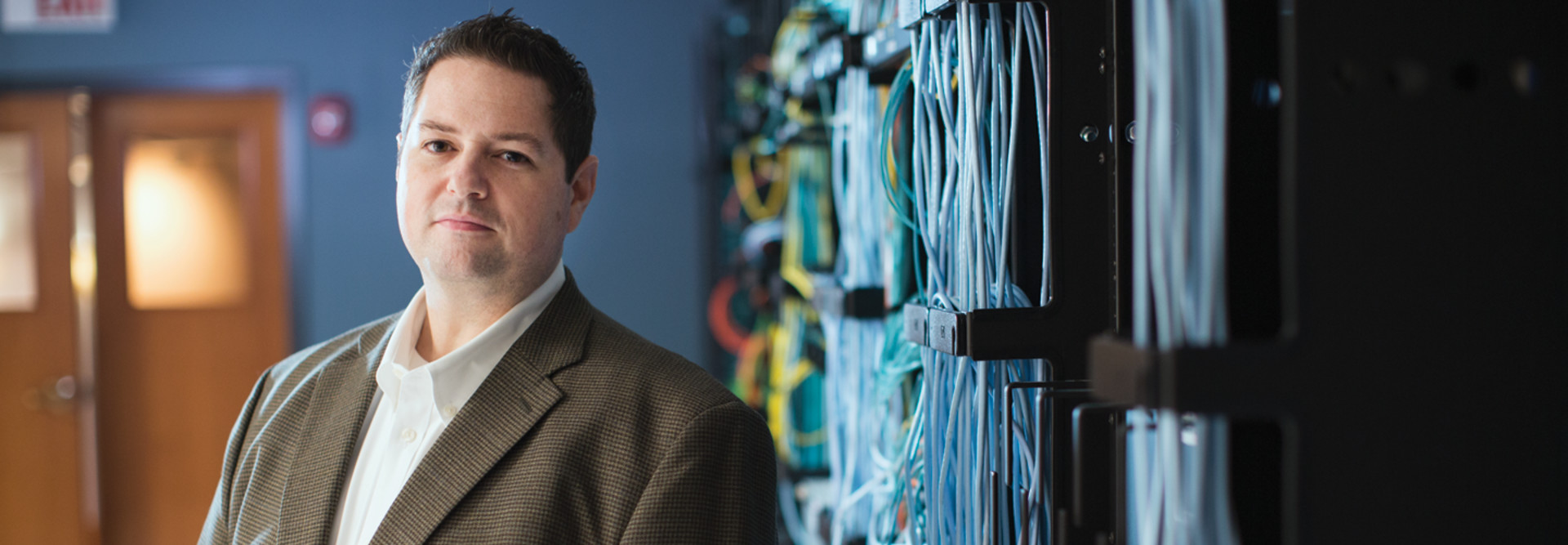Windows XP: For Colleges, It's Time to Move On
Windows XP arrived at DePaul University in 2002 on a wave of "rolling thunder," with the IT staff moving from computer to computer to install the new operating system and restore data, Director of Infrastructure Joshua Luttig says.
The deployment went well, but consumed vast amounts of IT time and inconvenienced faculty, staff and students at the private university in Chicago. With Microsoft's April deadline to end support for XP fast approaching, DePaul's technology staff looked for ways to roll out Windows 7 that would minimize stress, both on users and IT alike.
"We wanted the new installation to take fewer human resources, and we wanted it to be more flexible so people could do the migration when they wanted to," Luttig says. "We also wanted to give both the IT staff and users more time to do it."
By starting early and developing a self-service migration tool, the IT department has eased pressure on its staff and reduced disruptions for users during the migration to Windows 7, Luttig says. DePaul now finds itself comfortably on target to complete upgrades on about 6,500 PCs by the deadline — even with the complication of adopting an exclusively 64-bit architecture in conjunction with the migration.
What Happens After April 8?
DePaul is way ahead of many other IT organizations in business and higher education, Gartner Analyst Michael Silver says.
Because of the financial downturn and Vista — Microsoft's OS release after XP, which was skipped by a lot of IT departments — many organizations are now running late, Silver says. "Plenty of companies in financial services and healthcare are behind. They're usually on top of these changes, so it's not surprising that colleges are struggling to make the deadline."
Financial and staff resources are scarce in many IT departments, especially those in higher education, but the risks of keeping an unsupported OS on the network should make the project a priority, Silver says. After April, Microsoft will stop sending updates to patch vulnerabilities, which means machines running XP will be in much greater danger of intrusions or infections by malware, he says.
Ensuring that critical applications work with the new OS is the most crucial and time-consuming aspect of the migration. An inventory of all applications, including those that might not be directly supported by IT — such as those used by a university lab — is essential. Once the applications are identified, IT teams should budget plenty of time for their reinstallation, integration and testing on the new OS.
"Installing the image of the new OS is the easy part," Silver says. "My best advice would have been to start two years ago. Failing that, if there's money available, it would be wise to look for help from Microsoft or a services company with experience in these migrations."
A Successful Migration Doesn't Happen Overnight
Luttig and his staff began planning for DePaul's OS upgrade soon after Windows 7 was released in late 2009. By January 2011, the team had built a web-based self-service migration tool. An email link takes users to the application website, where the tool scans their computers and indicates which machines can be upgraded to Windows 7, which need more RAM to run the new OS and which need to be replaced, Luttig says. When a computer is ready for the new OS, the application takes the user to a scheduling system to choose a date for the automated migration. On that date, an icon appears on the user's desktop; when clicked, it will kick off the upgrade based on tools Microsoft provided in its Windows 7 deployment kit.
Legacy software that did not include a Windows 7–compatible version presents the biggest technical headache in the migration, Luttig says, and will require IT staff to negotiate with vendors to upgrade their applications.
DePaul offered plenty of training options for users, from written summaries of key functions to one-on-one sessions with IT staff.
"You have to have options because people are different, and they have different needs in their work," says Luttig.
The Windows 7 migration also has demonstrated the value of the IT staff's willingness to try a new, people-centered approach to such projects, Luttig says: "The more flexible model meant extra preparation, but it eased the transition for everyone."
The malware infection rate for computers running Windows XP, according to a recent Microsoft Security Intelligence Report. The same study showed the infection rate for Windows 7 at 4.9 percent, and 1.6 percent for Windows 8.
SOURCE:Microsoft Security Intelligence Report, Volume 15 (January–June 2013)
Pockets of Concern on Campus
At the University of Massachusetts Boston, the shift to Windows 7 is happening "the old-fashioned way" — one machine at a time, says Interim Vice Provost for Information Technology and CIO Apurva Mehta. Last summer, the university's IT staff identified about 150 faculty and staff computers that were still running XP and began individually reimaging each upgradeable machine with Windows 7, then restoring the user's data and applications.
"I was concerned that we were starting late, but we're optimistic at this point that we're going to be done with the machines we've identified by the end of January," Mehta says. "Our next step will be to see what we can do to help our labs."
The inventory did not include university laboratories or several academic departments that maintain their own IT staffs. The group has mounted an information campaign to educate the pockets of IT they don't directly control about the deadline and to offer assistance. They're also warning that computers still running XP after April could lose network access.
"We worry about our network, but we also worry about the work professors and students are doing and don't want that to be interrupted or delayed," Mehta says.
Along with the decentralized IT structure, limited funding has been a continuing headache in the migration process at UMass Boston. Mehta and his staff have had to scramble to cover the costs of replacing old hardware with insufficient RAM or processing power to run Windows 7, he says, as well as pay the fees some vendors require to provide a version of their applications for the new OS.
"You have to allocate plenty of time and resources for a project like this, which isn't always easy in a public institution like ours," Mehta says.
Two Steps Ahead
At Thomas College in Waterville, Maine, the XP migration is little more than a distant memory. The private business and liberal arts college, which prides itself on being ahead of the technology curve, completed its move to 64-bit Windows 7 in December 2009, Vice President for Information Services and CIO Chris Rhoda says. The college is currently rolling out Windows 8.1.
"We are early adopters by design because we want our students to leave here familiar with the latest technology," Rhoda says. "To make that work, we have a process designed to minimize the impact of an upgrade on students and faculty."
Computers in the IT department are always the first to migrate, Rhoda says: "That way, we're right there to deal with the 10 or 15 things that are likely to go wrong in the beginning."
The next step is upgrading some of the libraries' computers, timing the project to coincide with breaks between semesters, Rhoda says. IT then puts out a call for volunteers from the college community who are willing to try out the new technology.
Outdated computers are not a problem at Thomas because none of its hardware is more than 4 years old, Rhoda says. For the XP migration, the IT staff built virtual XP desktops for users who needed an application that would not run on Windows 7.
The best advice for a successful migration is to "test, test, test" and to fix problems as they are discovered, Rhoda says. Whenever a significant issue arises in a rollout, IT stops the deployment until it's resolved.
"If we encounter a 'showstopper,' we do just that," he says. "In the end, that saves time because the bugs don't cause problems with more machines. Our best testers are our users — they give a new operating system a real workout, and we take it very seriously if they tell us an application doesn't run as well as it did before."
The focus on users — easing them through the transition and improving their experience with the upgraded OS — is a common theme of successful migrations away from Windows XP, regardless of the individual institution's approach.
"We had to do the migration because of the deadline, but the real motivation is making things better for our customers," DePaul's Luttig says.








